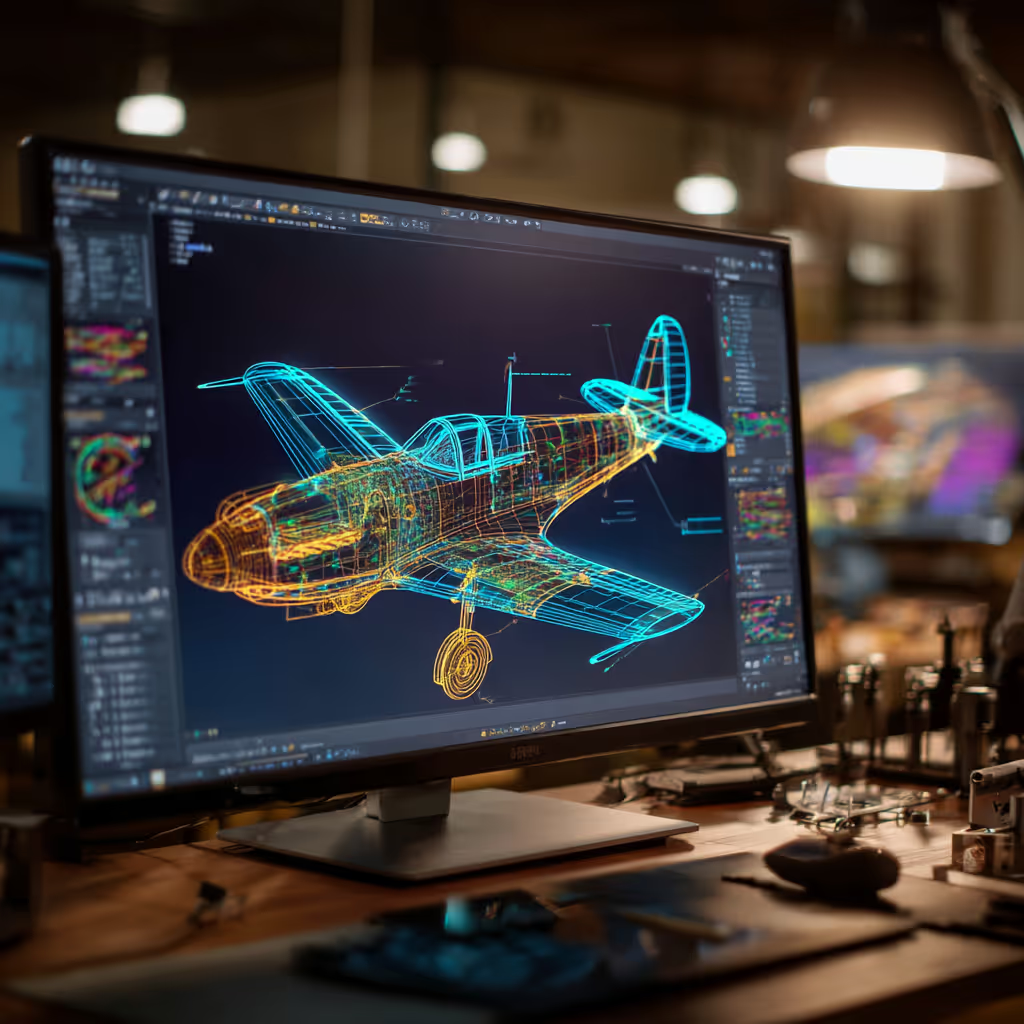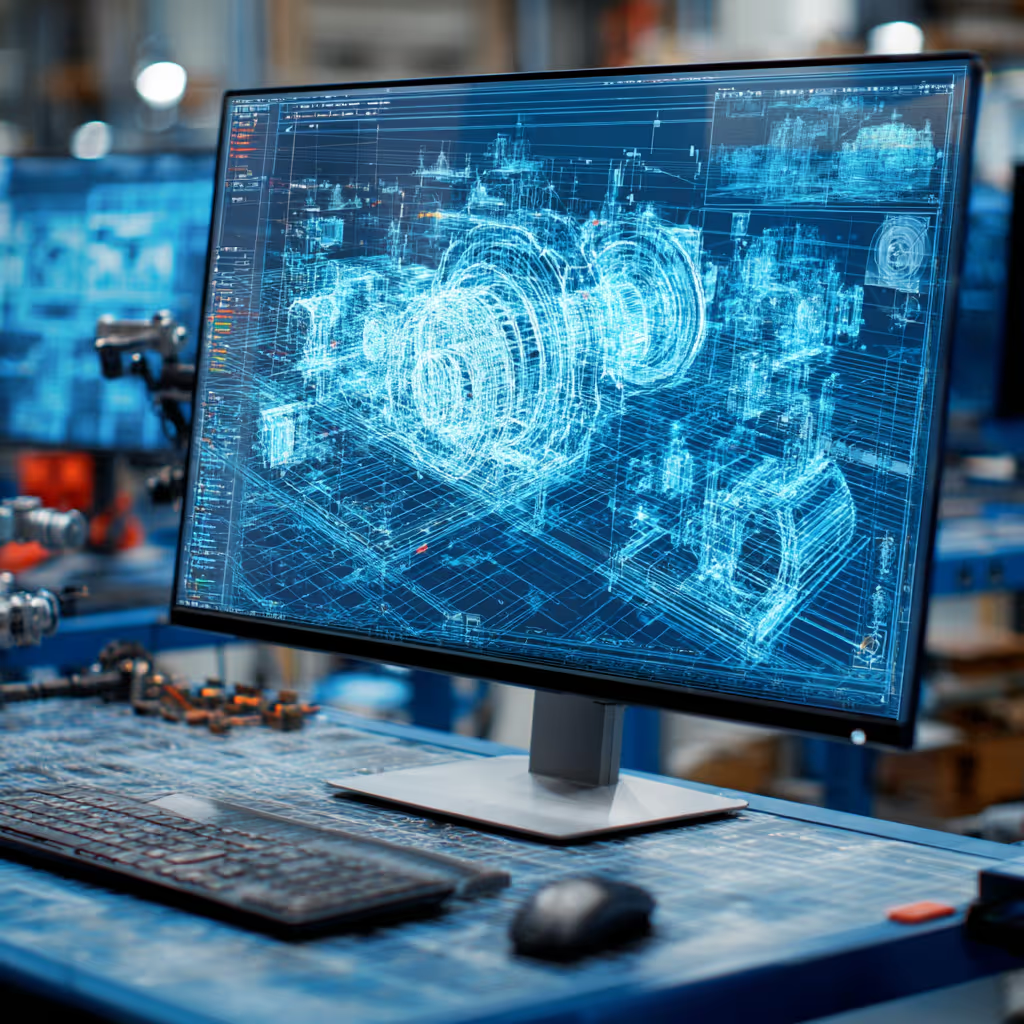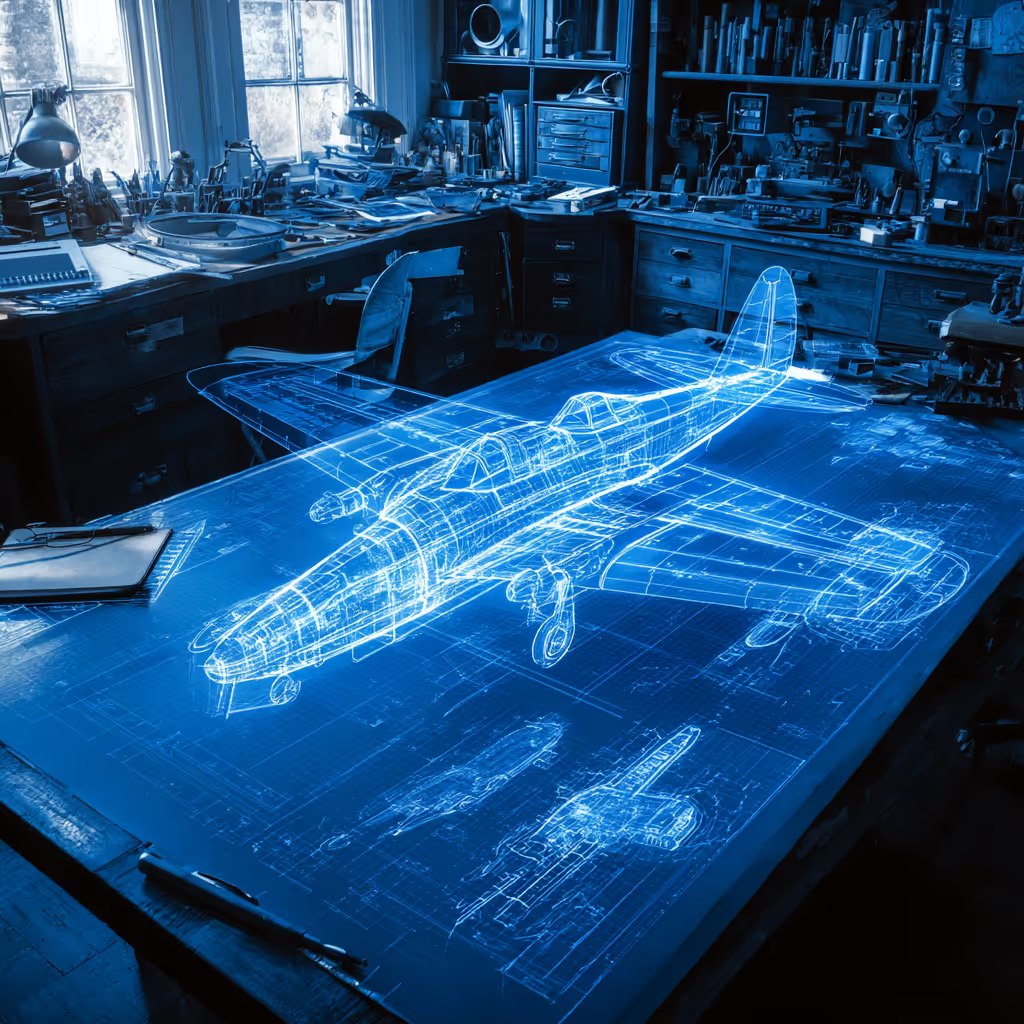How to Build an Aircraft Model by Converting 3D-Scanned STL Files into Functional 3D STEP Files

Getting a 3D scan of your aircraft model is a great first step, but it still leaves you pretty far from a manufacturable model. Machine shops often require STEP files to start working, and they won’t be able to accept your STL files. Even worse, going from an STL to a functional STEP file takes more than just one click.
In fact, the conversion process can take longer than the entire 3D scanning process. If you make a mistake along the way, you’ll face even bigger delays and cost sinks.
Our experts at CAD/CAM Services put together this quick guide to show you exactly how to build an aircraft model by converting 3D-scanned STL files into functional 3D STEP files.
Why Convert STL to STEP for Aircraft Models?
An STL file works well for 3D printing, but it doesn’t help an engineer beyond that. These files are often difficult to open with CAD programs, don’t have any parametric data, and cannot be edited or changed at all.
If you’re building a digital library or archiving your parts, they need to be in a CAD-friendly format, like a STEP file. STEP files are universal parametric models that can be used across CAD programs, can be opened and viewed easily, and give you the ability to pull dimensions and make changes.
With an STL, you can’t do any of these actions.
Understanding the Differences: STL vs STEP Formats
An STL file is a mesh-based file, which is essentially a collection of points with lines connecting them. STLs are used to create GCODE that allows parts to be 3D printed, but that’s basically it. They are also generated as a result of 3D scanning, but they need to be cleaned up before they’re useful.
STEP files hold a lot more data, and they are true 3D models as opposed to dots and lines that make up an STL file. STEP files can be opened in most CAD platforms and they carry metadata and parametric information. In an aerospace company, you might use a STEP file to share work with contractors or vendors who might not use the same CAD program as you.
Prepping the 3D Scan: Cleaning and Optimizing Your STL
Before you start the conversion, you need to prepare your 3D-scanned model. As you probably know, the model imports as an STL file. Open the file and fix any defects that might exist in the scan: holes, missing corners, faces with gaps in them, and any other mistakes you spot.
You can use a program like MeshLab or GOM Inspect to optimize the mesh density and clean up errors before you continue.
Reverse Engineering: Rebuilding CAD Geometry from Mesh
One big issue is that you cannot export an STL file into a STEP file and create physical properties and 3D data. Since the STL is a series of triangles and points, you might need to trace over the scanned file using NURBS surfaces or parametric CAD.
Other people use the scanned STL mesh as a baseline and create a reverse-engineered solid part as a new file in their CAD platform of choice. Without getting expensive software or outsourcing the conversion to our team at CAD/CAM Services, it can be a really tricky undertaking.
Reconstructing Aircraft Features: Wings, Fuselage, and Detail
What about complex features that aerospace engineers run into, like wings, a fuselage, and landing gears? These STL files can have a lot of little details that aren’t immediately noticeable, and you can run into missing details within your STEP file.
For these parts, you’ll need to use a 3D CAD program to reconstruct each part. You need to be very careful when generating the models, because the slightest mistake can lead to alignment issues and manufacturing defects.
We suggest using cross-sections within the scan and surface fitting to make sure you’re mapping the solid model to the generated mesh.
Assembling the Full Aircraft Model
With each aircraft component modeled into STEP or native CAD files, you can start assembling the parts. The assembly will be comprised of a series of individual components, and they need to be aligned, constrained, and arranged correctly.
Many aerospace engineers will create sub-assemblies with parent and children parts so they can be pre-assembled and inserted into assembly files with less time wasted.
Validating the Geometry: Accuracy and Tolerances
Now that your aircraft model is assembled, it’s time to check for accuracy and tolerances. This is where people can run into a lot of issues, especially with STEP files that were generated from STL meshes. We like to overlap the created CAD file over the scanned STL mesh to look for deviations and mistakes.
Taking extra time during this step will ensure you meet the required aerospace tolerances, which are tighter than many other industries. If you’re running into issues, let our expert engineers help!
Exporting to STEP Format: Final Output and Compatibility
The final step is to export your model into a STEP file. Doing this will ensure your file can be shared, opened, and accessed by people who might use different CAD programs than you. In most programs, you can run either a “Save As” or “Export” function to create a STEP file from whatever your native CAD file is.
Real-World Applications: From Legacy Restoration to 3D Printing
Using this STL to STEP conversion process has helped a lot of aerospace companies in the past. In one project we were assigned, we took 3D scans of entire F35s and converted the meshes into functional CAD models. Doing so saved a lot of time and money on the assembly floor, and it digitized the entire aircraft.
In other projects, we used 3D scanners to quickly generate 3D-printed parts with very little reverse engineering time. You might even use this process to restore previous legacy parts and optimize your catalog of parts. A well-made STEP file can get your parts ready for CNC machining and manufacturing.
Conclusion
With us, you can bring your legacy aircraft components back to life. We can handle the entire STL-to-STEP process, and you’ll be able to save time and money with our team. With nearly 100 engineers and designers on our team, CAD/CAM Services can offer you faster turnarounds and better prices than our competitors. Get a free quote today.
Recent Posts


Tips for Picking the Perfect 3D CAD Viewer for Your Needs
This guide will teach you about 3D CAD viewers and outline considerations to make before picking the right one. We review 5 options and pick a clear winner.

In this guide, you’ll learn how CAD/CAM Services can save you time and money during each digitization project. Digitization can make manufacturing faster than ever before.

“Extra Large” CAD Models – What It Means for SolidWorks, CATIA, and Siemens NX
This beginner’s guide will walk you through the problem with “extra large” CAD models, how it impacts your work, and some common ways to avoid them.
